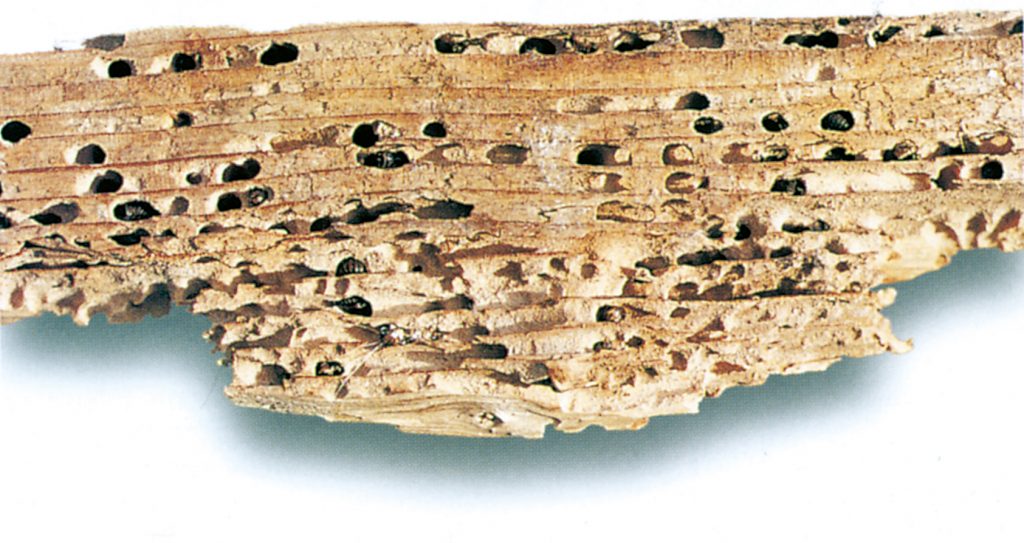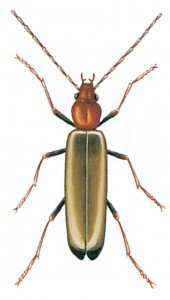(Latin: Nacerda melanura)
This species is rather like a cerambycid, having long antennae, but it actually belongs to a completely different family. It is thought to have come originally from the Great Lakes area of the U.S.A., but has now been carried to all parts of the temperate zone by ships.
The adult beetle is seen in summer, and it often occurs in large numbers during the middle of the day and sometimes enters houses. After mating the females lay eggs on damp timber.
The larvae prefer softwood provided it is not dry. Probably such timber will have been to some extent attacked by fungi, but it must not be so rotten as to be falling apart.

When seen in a house this beetle may have come in from outside, having emerged from ships’ timber or wharves, and it also thrives in piling and in structural timber in damp cellars.
It is not uncommon for such timber to be so damaged as to require replacing. The new timber should be impregnated and efforts made to reduce the humidity, possibly by improving the ventilation.





